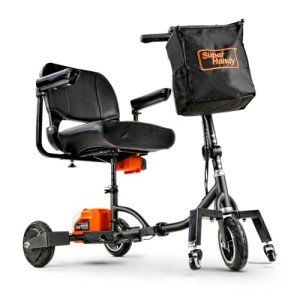Understanding Mobility Devices: Enhancing Independence and Quality of Life
In today's hectic world, the desire for mobility is universal. Nevertheless, particular medical conditions or age-related obstacles can impede motion, resulting in a continuous look for help. Mobility devices function as essential tools to boost self-reliance, improve quality of life, and enable individuals to engage fully in their communities. This short article provides a thorough summary of mobility devices, including their types, features, selection criteria, and more.
Kinds Of Mobility Devices
Mobility devices range from simple aids to intricate equipment, tailored to meet various requirements. Below is a table summarizing common kinds of mobility devices:
| Type of Device | Description | Perfect For |
|---|---|---|
| Walkers | Four-legged support devices that provide exceptional stability while strolling. | Individuals needing extra support. |
| Walking canes | Single or three-legged sticks that enhance balance and support walking. | Those with slight mobility troubles. |
| Wheelchairs | Seats installed on wheels, available in manual and electric versions. | People with limited or no mobility. |
| Scooters | Electric automobiles developed for outside usage and ease of navigation. | Those who can't stroll cross countries. |
| Crutches | Devices that assist people move weight away from an injured leg. | Individuals recovering from leg injuries. |
| Rollators | Walkers with wheels, seats, and brakes for improved mobility. | Users needing rest options while walking. |
| Raise Chairs | Reclining chairs that assist users in standing up and sitting down. | Seniors or those with mobility restraints. |
| Mobility Scooters | Small electric cars for limited mobility, typically utilized outdoors. | People requiring help over cross countries. |
Key Features of Mobility Devices
When choosing a mobility gadget, a number of key functions ought to be considered to guarantee optimum performance and ease of use:
- Weight Capacity: Understanding the gadget's weight limitation is essential for safety and effectiveness.
- Adjustability: Devices ought to be adjustable in height and width to fit the user comfortably.
- Mobility: Lightweight and foldable choices are important for users who travel or need transportation.
- Stability and Safety: Look for features like anti-tip wheels and durable structures to enhance safety.
- Ease of Use: Simple mechanisms and user-friendly designs can make a significant distinction in day-to-day usage.
- Convenience: Ergonomic designs and cushioned seats can improve the user experience.
Selecting the Right Mobility Device
Selecting the ideal mobility device can be an overwhelming task. Here are some steps to assist the decision-making process:
- Assess Needs: Evaluate the individual's mobility difficulties and everyday activities.
- Seek advice from a Professional: Engage health care experts who can offer recommendations based upon the person's physical condition.
- Trial Options: If possible, trial various devices to figure out comfort and functionality.
- Review Budget: Consider the cost of the device, including any additional functions or modifications needed.
- Research Options: Determine the best brands and models by reading reviews and contrasts.
Table: Comparative Analysis of Popular Mobility Devices
| Device | Advantages | Downsides |
|---|---|---|
| Walkers | Exceptional stability, promotes walking. | Bulky, might restrict motion in small areas. |
| Walking sticks | Lightweight, enhances balance. | Might not supply adequate support for serious mobility problems. |
| Wheelchairs | Ideal for those with significant mobility limitations. | Can be cumbersome, particularly in indoor environments. |
| Scooters | Great for outdoor use, simple to maneuver. | Limited indoor use, heavier. |
| Rollators | Provides rest alternative, simple to move. | May need more space than traditional walkers. |
| Raise Chairs | Comfy, helps shift from sitting to standing. | More costly, bigger footprint. |
Regularly Asked Questions (FAQs)
1. What is a mobility device?
A mobility device is any tool designed to assist individuals in moving and navigating their environment. This consists of walkers, wheelchairs, scooters, and crutches.
2. How do folding mobility scooters with swivel seat know which mobility device is best for me?
Consider your specific mobility difficulties, physical capabilities, and way of life needs. Consulting with healthcare specialists can also provide customized recommendations.
3. Are mobility devices covered by insurance coverage?
Lots of insurance strategies, including Medicare, might cover specific mobility devices. It's essential to consult your insurance provider for particular protection information.
4. Can I rent a mobility device instead of purchasing one?
Yes, numerous medical supply shops and pharmacies provide leasings for mobility devices. This option is advantageous for individuals with momentary mobility problems.
5. How can I keep my mobility gadget?
Regular upkeep is important. It consists of cleaning up the device, looking for wear and tear, and ensuring all parts are working properly.
The Impact of Mobility Devices on Quality of Life
Mobility devices significantly improve the lifestyle for people with limited mobility. They promote self-reliance, encourage social interaction, and improve access to essential services and recreational activities.
- Increased Independence: Users can navigate their areas, go to occasions, and participate in hobbies without depending on others.
- Social Engagement: Mobility devices help with involvement in social events, thus combating feelings of seclusion.
- Enhanced Safety: Devices provide stability and lower the threat of falls, promoting user confidence.
Mobility devices are more than simply tools for motion; they are entrances to self-reliance and quality living. By comprehending the various kinds of mobility aids readily available, their key functions, and factors to consider for choosing the best gadget, individuals can make informed choices about their mobility needs. Ultimately, the right mobility gadget can cause a more active, satisfying life. Whether it's a walker, wheelchair, or scooter, the ideal option contributes significantly to improving the mobility and self-reliance of users.

